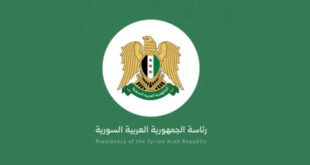Rome, SANA-In honor of the traditional Syrian handicrafts and within the days of “The Damascene Rose… From Syria to Turin” organized by the Royal Museums in Turin and the Syrian Trust for Development, and in cooperation with the “Santagata” organization for the economy of culture, an artistic model of the Damascene Rose was displayed in the Italian royal gardens.
The design of the model aims to celebrate Syrian craftsmen, appreciate their creative skills, and highlight the beauty and accuracy of their heritage products. The Damascene rose was chosen as a central element for the model because of its importance in the Syrian culture, as it combines the elements of flexibility, beauty, and interdependence between the various forms of traditional Syrian art and crafts from which the work is made.
The design depicted six ancient traditional crafts, allowing the visitor to the royal gardens to contemplate its meticulously crafted details, and it used a range of materials and unique characteristics for each petal of the Damascene rose, reflecting the excellence and creativity found in Syrian handicrafts.
The first of those crafts from which the rose was made was the “shell” craft, which Damascus was famous for, and the craftsmen who made this craft have worked from the nineteenth century to the present day to renew it, preserving its originality until the Europeans called it “damaskina.”
The second craft was devoted to “engraving and engraving on copper.” This craft dates back to the second millennium BC and has spread to most parts of Syria, as there is a market for coppersmiths in Damascus, Aleppo, Homs, Hama and Deir Ezzor.
The copper markets were founded hundreds of years ago when the Syrians relied on copper that was manufactured and transformed into supplies and appliances for the kitchen, tables, homes, etc., and craftsmen used to import copper sheets from abroad and hammer them in their shops to manufacture various types of copper utensils.
The work was also adorned by the craft of “straw making,” which is one of the most important and beautiful traditional industries that are inherited by generations in the Syrian countryside. Women were keen to teach their daughters this craft, which provided them with the necessary household tools, after the availability of its raw materials of wheat or barley.
The craft of “traditional glass” took its place in the model of the Damascene rose, this industry that dates back to the Phoenicians in Syria, who worked to transfer it across the Mediterranean Sea to Europe, and in the ninth century BC, centers for the glass industry appeared in Syria, after which a process was reached.
Glass blowing in the Syrian coasts flourished in the Islamic era, especially in Damascus, and continued manually to spread to all Syrian cities. Painting on glass was also added to the craft of “traditional glass”, and this cultural element dates back to the tenth century AD, while Aleppo and Damascus, specifically in the thirteenth century AD, were famous for their stained glass. The painter’s experience and accuracy in drawing engravings on glass.
The fifth craft in that model was the “Damascene brocade” craft, and its manufacture dates back to more than five centuries in Damascus, and it has international fame.
The last craft was devoted to “Arabic calligraphy”, which is considered one of the most important means of progress and urbanization, and it is one of the most accurate arts. It embodies the genius of Arabic decoration presented by creative hands practicing this art, accompanied by a skilled mind with innovation to form decorative artistic paintings of the utmost perfection and beauty.
In a statement to SANA, Consultant expert at the Syrian Trust for Development, Reem Saqr, said that through this selective mix of crafts, Syrian artisans were keen to create a harmonious fabric of the Syrian heritage traditions through this artwork that confirms the skill of the craftsmen, the Syrian cultural diversity and the artistic brilliance that is included in each craft.
Mazen Eyon
 Syrian Arab News Agency S A N A
Syrian Arab News Agency S A N A

